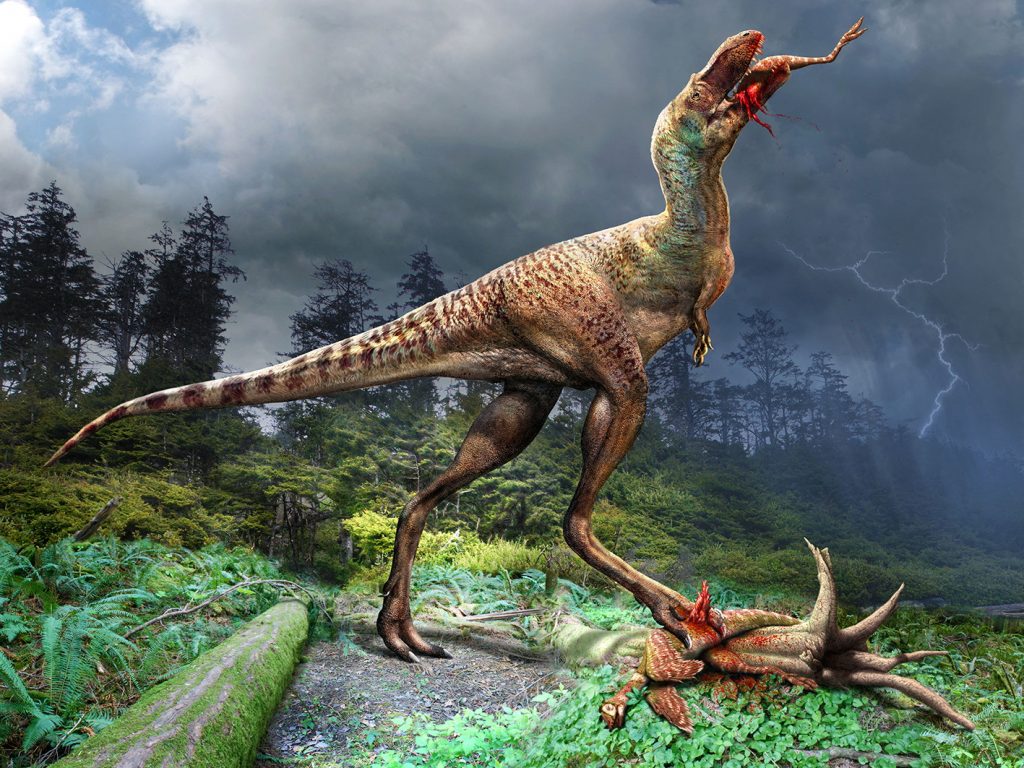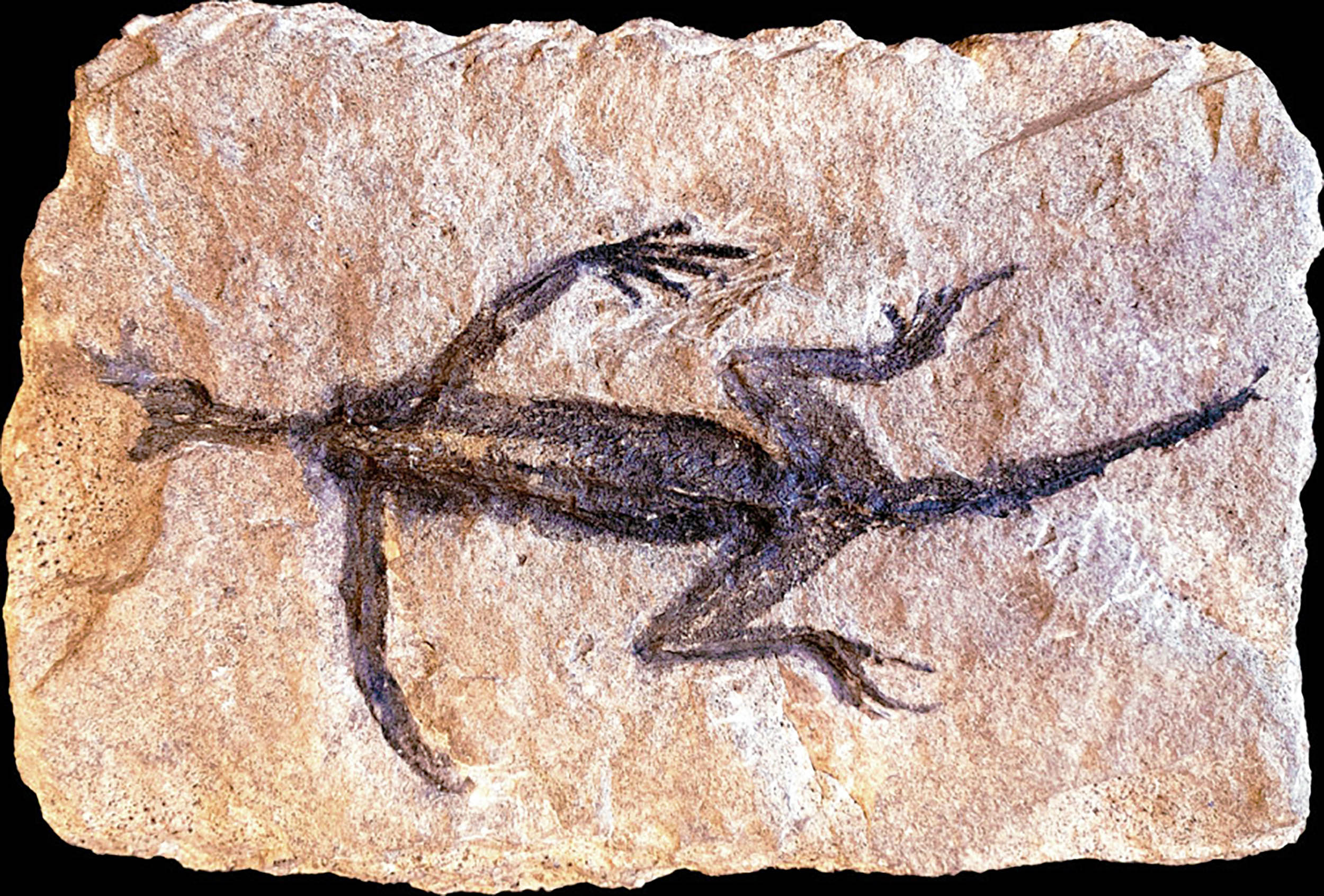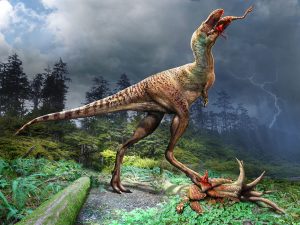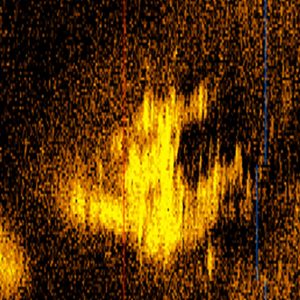Part of an ancient fossil prized for what its mummified flesh revealed about a reptile that predated the first dinosaurs has been shown to be a forgery.
While the fossil’s legs and scales are genuine, portions of what appeared to be an intact 8-inch-long reptile are painted rock.
The fossil, discovered in the Italian Alps nearly a century ago, had what researchers have long believed were soft tissues preserved within a well-defined, darkened body shape and limbs that stood out in contrast to the surrounding pink sandstone within which it was found.
“All of that dark material, that’s fake skin,” said Valentina Rossi , a paleobiologist at University College Cork in Ireland and lead author of a new study published in the journal Palaeontology that revealed the apparently forged material .
The specimen, a lizardlike species named Tridentinosaurus antiquus, had baffled the paleontology community for nearly 100 years.
Typically, fossils found in that part of Italy during the time period that the specimen dates to—around 280 million years ago—take the form of bones or footprints. Fossilized mummies , which preserve some of an animal’s skin , are more common during the Jurassic and Cretaceous periods starting roughly 100 million years later, when dinosaurs occupied the planet.
But this specimen appeared to be a much older mummy—one of the most ancient fossils of a backboned creature ever found in Italy.
The persistent mystery of the fossil prompted Rossi’s examination.
At the time of its discovery, there were few ways of probing a fossil that wouldn’t damage the specimen. Given this specimen’s unique qualities, paleontologists at the time likely didn’t want to jeopardize the Tridentinosaurus fossil with additional testing that could have revealed changes made to it.
In the past decade or so, scientists have developed nondestructive methods to examine whether a fossil has preserved soft tissues, and, starting in 2019, the researchers began studying the specimen using those newer methods.
Mummified remains, Rossi said, can help reveal information about a creature’s coloration, its musculature and the environment in which it lived. But Rossi’s analysis showed that the Tridentinosaurus fossil’s texture and composition didn’t match other fossils with preserved soft tissues.
“The shock was like, ‘Oh, actually, we can’t see anything that is a biological structure here,’ ” Rossi said.
The specimen also glowed under ultraviolet light, a characteristic of some artificial pigments, revealing that a paint known as bone black—which is still sold today—was used to augment the fossil.
According to the study, the ancient reptile’s legs, while poorly preserved, represent legitimate fossilized material. Analysis revealed the presence of what paleobiologists call osteoderms—like the scales found on crocodiles—between the creature’s shoulders.
The new study’s results look very convincing, according to Paul Barrett , a paleobiologist with the Natural History Museum in London who wasn’t involved in the work.
“It’s only been the availability of advanced chemical techniques that has brought this issue to light,” he said.
Rossi said there is no indication of who altered the fossil, but said the changes likely happened sometime between the fossil’s discovery in 1931 and its initial naming in 1959. Scientists have since used Tridentinosaurus in studies comparing ancient reptile species and placed it on the prehistoric tree of life based primarily on its body shape and age, which had been estimated by dating layers of the surrounding sandstone.
Those studies now need to be re-evaluated, Rossi said. “The first description of this species was literally based on this current body outline, and now we know the proportions are not real,” she said. “So we can’t trust this fossil as it is.”
Barrett said the fossil needs to be re-examined using CT scanning to establish the true outlines and shapes of the bones preserved. CT scans help paleontologists peer inside the rock surrounding the bones to see if any other bones remain hidden. Only then can more detailed comparisons between Tridentinosaurus and other ancient reptiles be made, and whether the specimen still represents a distinct species can be determined, he added.
But according to Philip Currie , a professor of dinosaur paleobiology at the University of Alberta in Edmonton who wasn’t involved in the new work, the integrity of the specimen has been compromised.
“It really should not be called a forgery or fake when the intention of the person who did the touch-ups will probably be unknown forever,” Currie said. But he added, “It will never have the same scientific value.”
Write to Aylin Woodward at aylin.woodward@wsj.com






